Bullpup: from the first samples to the present day (part of 1)
There are a number of solutions to the problem with flying liners. For example, throwing spent cartridges down. In this case, the store should be located on top or side (FN P90). Another option is to replace some parts of the machine, which makes it easy to adapt it to any shoulder (TAR-21, Steyr AUG). It is also possible to extract the sleeves when the sleeves are not ejected immediately after the shot, but after passing along the entire weapon to the muzzle where they fall out (FN F2000, A-91).
The scheme began to gain popularity and became widespread only after the Second World War. This scheme became widely known after the Austrian company Steyr-Daimler-Puch introduced its universal automatic rifle Steyr AUG in 1977 year. This rifle and to this day is popular in the market and is in service with a sufficiently large number of armies in various countries. However, the first experiments on the creation of weapons of such a scheme began at the beginning of the 20th century. By and large, the layout of the bullpup itself could only appear after the widespread distribution of unitary cartridges, thanks to which the charge ignition was reliably “hidden” inside the weapon itself. In earlier muzzle-loading models of small arms, open charge ignition would occur in centimeters from the shooter’s eyes, which put him at serious risk.
The first known model of small arms, made in the bullpup layout, is the shop rifle of the Scottish Thornecroft system, which was patented in the UK back in the 1901 year. Torneikroft offered the Royal Crown of Great Britain a new cavalry carbine of his design. In an attempt to make the weapon as short and compact as possible while maintaining the barrel length, the designer moved the trigger forward, so that the magazine was in the neck of the carbine box, and the bolt moved above the butt comb. Torneicroft's carbine had a length of 993 mm with a barrel length of 700 mm, and its weight was 3,4 kg. without cartridges. For comparison, the cavalry Lee-Enfield carabiner Mark 1 of model 1894 of the year standard for that period had a length of 1014 mm with a barrel length of just 527 mm, possessing the same weight.
Due to the fact that the carbine shop was completely hidden in the neck of the box, it became integral and was designed only for 5 cartridges against 10 cartridges for rifles of the Lee-Enfield family. The backward movement of the bolt also made it difficult to quickly reload the weapon without taking the butt from the shoulder. As a result, Torneykroft's carbines, which actually became the first known small arms of the bullpup scheme, were rejected by the conservative British military, who were awaiting the adoption of the SMLE Mk.I shortened rifle, which happened in 1904 year.
Almost at the same time as Thorneycroft. in 1902, a similar system was proposed to the English army by a certain Godsal. The main difference between the Godsala rifle was that the bolt in it did not move parallel to the axis of the barrel, but somewhat downward. Thanks to this decision, he hoped to make reloading weapons faster and more convenient. The Godsala rifle was also equipped with an integral box magazine, designed for 5 rounds. Locking was performed with a longitudinally sliding rotary bolt with front lugs. The prototypes of this rifle were made by the well-known British company Webley & Scott, but they never went into production due to the lack of interest from the British army. The Godsala rifle with a total length of 1143 mm had a barrel length of 756 mm and weighed 3,2 kg without cartridges.
In 1910, the small arms development banner in the bullpup layout was picked up by the Frenchman Faucon, who set himself the goal to modernize the new experienced self-loading rifle of the Minier system in order to make firing out of it as comfortable as possible: standing, knee-high or on the move. The patent obtained by Fokon was called “balanced rifle”, due to the fact that according to the developer’s version, the rifle was located over the shooter’s shoulder, as if balancing on it. In this case, most of the mass of weapons fell on the shooter’s shoulder, and not on his hands. In this version, the butt plate was placed under the weapon, in front of the store and in the area of the center of mass, and under the front of the self-loading rifle there was a pistol grip for fire control, as well as a trigger hook. For those years it was a very original design, significantly ahead of its time.
New and in many ways invaluable experience gunsmiths provided the First World War. Almost immediately after its completion, new types of weapons made in the bullpup layout began to appear. So in 1918, the American Fordyce set for himself a task that was similar to the pre-war task of Fokon, with the only amendment that he decided to adapt the light machine gun for firing "straight off".
The first step of the developer in this direction was the modification of an ordinary Lewis machine gun so that it was placed in a combat position on the shooter’s shoulder. To control the shooting and hold the weapon on the casing of the trunk, an additional handle with a trigger hook was attached to the bottom, which was connected with a regular long bar. The second step of the developer was to rid the structure of the butt that had become “unnecessary” and to add a loop into which it was possible to pass the arm, so that the weapon was more reliably held on the shoulder. And finally, in the most radical version of the rework of the machine gun, the inconvenient Lewis disk was supposed to be replaced by a magazine of the original design with an endless closed ribbon. The cartridges in this store were placed perpendicular to the barrel of the machine gun and turned 90 degrees before they were fed into the barrel. It is not known for certain whether all the Fordyss machine guns existed in the metal, but the simplest version of the rework of the Lewis machine gun seems to be quite real for its time.
In the same year 1918, another American Welsh received his own patent for the bullpup system. He tried to solve the problem of increasing the effectiveness of pistol shooting by transferring the load from the weight and recoil of the pistol from the hand and carpal joint to the forearm and shoulder joint of the shooter. Externally, Welsh’s development was a long-barreled self-loading pistol, the store of which was located at the rear of the weapon in a downwardly protruding housing, while the trigger and firing handle were located immediately behind the muzzle, under the barrel of the pistol. When firing from such a pistol most of its mass was supposed to fall on the forearm arrow. However, there is also no data on the existence of the presented system “in metal”.
Already in 1920, another patent was issued in the USA, which was briefly titled “military rifle”. This patent was prepared by a sergeant of the American Army Cunningham, it described a fairly advanced for those years army semi-automatic rifle, made in the bullpup layout. The rifle was supposed to get a capacious magazine on the 20 cartridges, which was hidden in the butt. The rifle was equipped with an automatic gas vent, and in the back of the butt under its crest was a large longitudinal window. The purpose of the window was to provide the shooter with the possibility of a convenient grip of a rifle for a bayonet strike, allowing the entire length of the weapon to be used without putting the soldier with a smaller bullpup at a disadvantage during a bayonet bout with an enemy armed with a standard rifle.
The next really interesting example is the development of the Frenchman Delacres, who in 1936 received a patent for a system directly related to the layout of the Welsh pistol mentioned above. In the text of his patent we are talking about weapons such as a revolver or a pistol, but the illustrations contained a very characteristic image of a weapon with two triggers, which indicated the possibility of automatic fire. Perhaps it was the first attempt to introduce a submachine gun in the bullpup layout.
But all these are samples that cannot be touched, or even seen in photographs. At the same time, at the end of the 1930s, Czechoslovakia was added to the countries where they worked on such weapons. The end of the 30-ies of the last century in many countries was marked by work on the creation of anti-tank guns to arm infantry units. A distinctive feature of most of these guns was the barrel of great length, which was necessary for the acceleration of relatively small bullets to high speeds, which were needed to penetrate armor. To reduce the size of this rather big type of weapons, Czechoslovak gunsmiths turned to the bullpup layout. In particular, this was done by the legendary Holecki brothers.
In 1938, in Czechoslovakia, an anti-tank gun under the designation ZK-382 was developed at the Arms Factory in Brno, it was intended for an experimental cartridge 7.92x145mm. In the 1941 year, already during the years of the German occupation, the PzB M.SS.41 anti-tank rifle, designed for the German cartridge 7.92x94 mm, went into mass production. It is this anti-gun that was limitedly used by the Germans at the early stage of the Second World War can be called the first weapon in the bullpup layout ever adopted for service and mass-produced.
The PzB M.SS.41 / PzB-41 (t) anti-tank rifle was made in the bullpup layout and had an unusual design to achieve minimum dimensions for a given barrel length. The shutter of this anti-gun was still, it was rigidly connected to the body of the weapon. To perform the recharge used trunk. Locking was carried out by turning the barrel clockwise (in the breech of the gun there were cuts for the fixed stop of the radial combat stops). After unlocking (turning the barrel counterclockwise), the barrel was moved forward relative to the body of the weapon (box), while the cartridge case was held by the extractor hook on the fixed shutter mirror. After the barrel of the anti-tank gun was retracted to the end, the cartridge case fell out of the weapon, and the barrel could be moved back. When making a movement backward, the barrel seized another cartridge from the store, slamming into it, and after the barrel arrived in the extreme rear position, it was necessary to turn it clockwise, rigidly linking it with the bolt. The control of the barrel movement (forward-backward movement and rotation) was carried out using a pistol grip fixed to it. The gun was powered by cartridges using detachable box magazines, which were connected to the left, at an angle downwards.
The initial period of the Second World War was successful for Hitler's Germany. In those years, a large number of people tried to flee from the occupied territories to other states, including England. Among those who fled were also talented gunsmith designers. Today it is difficult to say whether the revival of the bullpup layout in England was the result of a “mind run” or the residents of the misty islands themselves recalled their developments already 40 years ago. Anyway, it was in the 1940-ies on the islands there was a real surge of interest in such small arms infantry.
One of the most well-known experimental systems of this time period is the EM-1 automatic rifle caliber 7.92x57 Mauser, which was created by the Polish immigrant designer Korsak. In terms of setting up its main mechanisms, it was quite close to the German automatic rifle FG-42, differing from it mainly by the quick-change barrel and the bullpup layout with the lower store layout. At least one EM-1 automatic rifle, which is stored in the UK, has reached our days.
Somewhat less well known are the development of the British in the field of creating sniper rifles in the bullpup layout. Such rifles were also designed under the chuck 7.92х57 Mauser, who was in service with the royal armored forces. Information about two similar rifles has reached our days. The first of them received the designation SREM-1 (Sniper Rifle Experimental Model 1 - sniper rifle experimental model №1). It was created in the UK in 1944 year. The rifle was designed by a team of engineers led by Eric Hall. This sniper rifle had a vapor-automatic. The reloading of the weapon was manual with the help of the pistol grip of the fire control moving back and forth. The magazine with magazine charging was hidden in the butt, the ammunition was powered from five-shooter stores from a Lee-Enfield rifle No. XXUMX. The rifle's pistol grip was taken from a Bren machine gun.
The second sniper rifle, known by the name of its creator Hall (Hall rifle), was a self-loading rifle with a vapor mechanism and a vertical wedge sliding gate. In developing this type of weapon, Hall rather radically approached the solution of the problem of ejection of spent cartridges near the shooter’s face, which is inherent in all weapon models in the bullpup layout. After the shutter opened (it moved vertically down), the cartridge case was thrown back over the shoulder of the shooter through a specially made channel that ran in the crest of the butt. However, neither the Hall rifle, nor the SREM-1 could not reach the serial release. But a rational grain of these developments could fall into fertile soil, so that within a few years after the war, they would sprout as the first infantry machine gun in the bullpup layout, which would be formally adopted. But that's a topic for another article series.
Information sources:
https://www.all4shooters.com/ru/glavnaya/tekhnika/2015-statyi/Ranniye-obraztsy-oruzhiya-komponovki-bullpap
http://forum.guns.ru/forum_light_message/36/000276.html
http://world.guns.ru/atr/de/pzb-mss41-r.html
http://www.dogswar.ru/oryjeinaia-ekzotika/strelkovoe-oryjie/4053-avtomaticheskaia-vin.html
Information from open sources
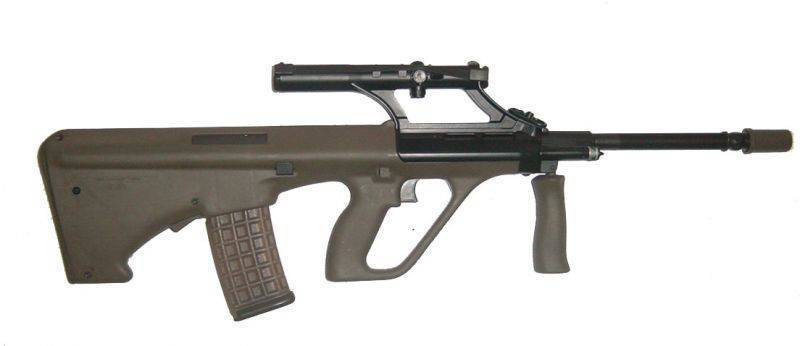
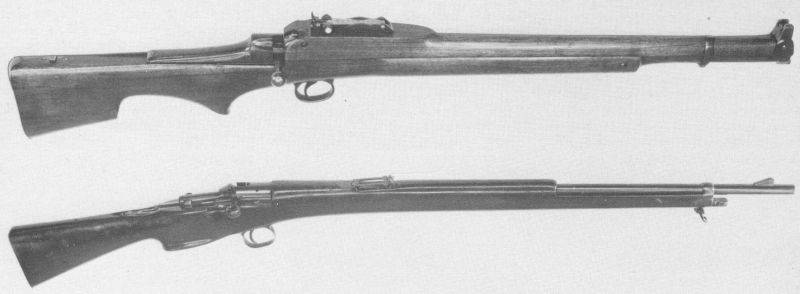
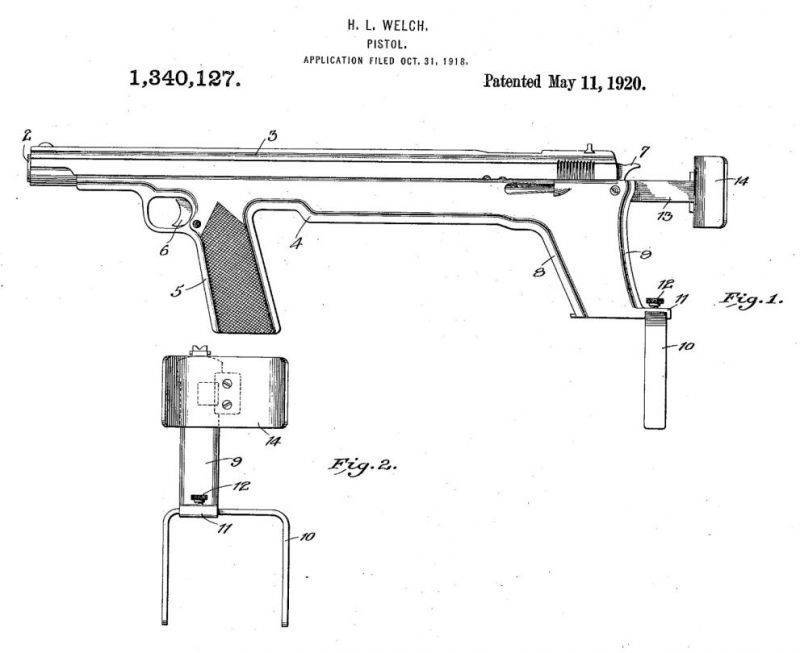
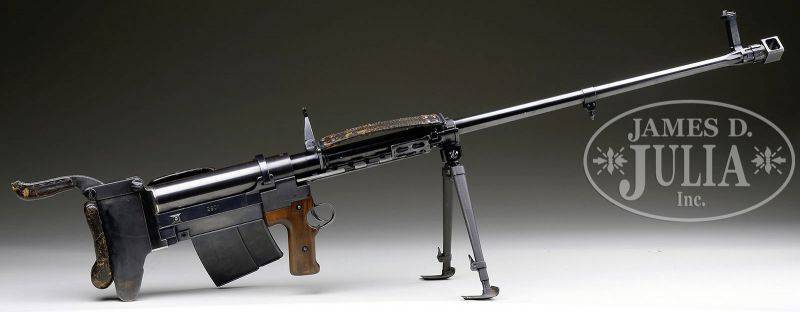
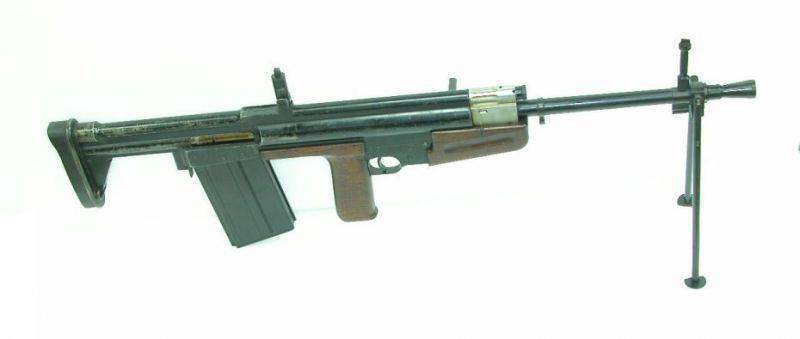

Information